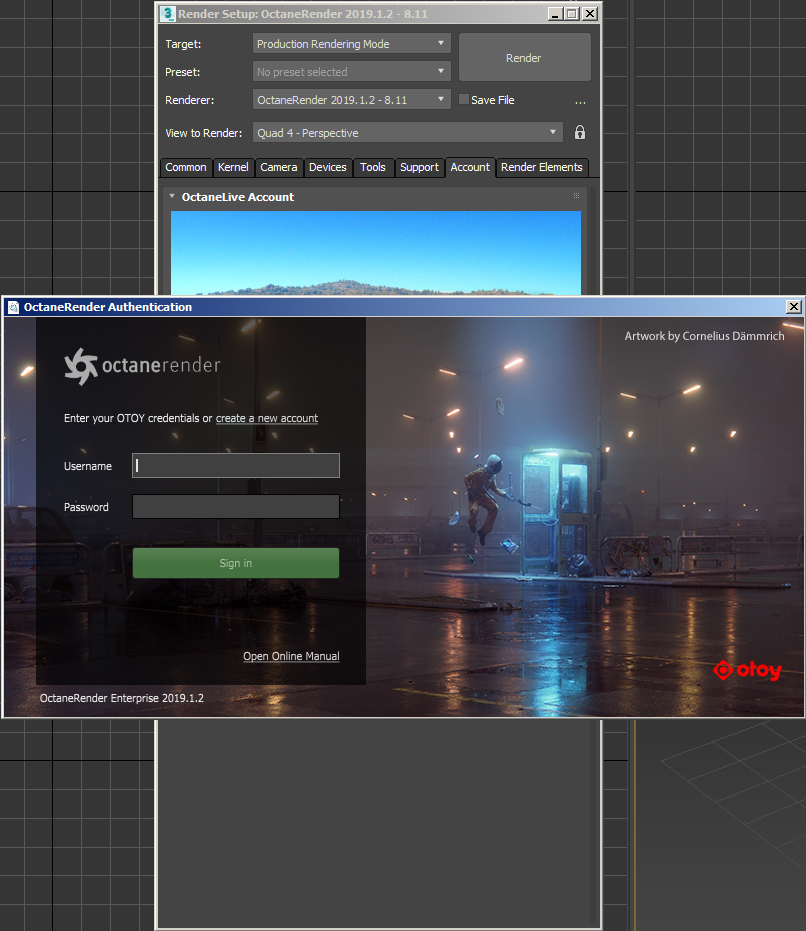

- #Octane render max how to#
- #Octane render max professional#
Here are two picks from each of the two companies: AMD Threadripper 2990WX

Your choice essentially boils down to top-of-the-line CPUs from AMD and Intel.
Price: CPUs are available at a variety of prices, but those that are considered the best CPU for 3D modeling and rendering belong in the high-end category, with some CPUs offering a much better performance to dollar ratio than others. Most modern CPUs support a feature called dynamic overclocking (sometimes also called Turbo Boost), which temporarily increases the clock speed as required to meet demand. The higher the clock speed, the faster the CPU is. Clock speed: refers to the frequency at which a CPU can execute instructions. Cores are especially important when it comes to CPU rendering because CPU rendering engines assign one bucket to each core. 
The more cores a CPU has, the more tasks it can perform at the same time.
Number of cores: simply put, a core is the number-crunching part of a CPU. When choosing a CPU for a 3D artist, pay attention to the number of cores, clock speeds, and price. Regardless of your interest in CPU or GPU rendering, you need a powerful CPU to make your 3D computer graphics program of choice work without any annoying lags. Now that you’re familiar with the two main types of 3D rendering, it’s time to take a closer look at the individual components you should be paying attention to when selecting a workstation for a 3D artist. Since GPU rendering relies on the graphics card to do the heavy lifting, it performs best with a max-core-clock CPU, instead of a CPU that has many cores running at lower frequencies. If you would like to render 3D graphics with a graphics card, you should be looking at high-end graphics cards with ample memory, excellent performance, and efficient cooling. GPU engines make it possible to use a graphics card for rendering instead of a CPU, speeding up the rendering process because a single GPU can be equivalent to anywhere from five to twenty CPUs, and utilizing more than one GPU card is possible. GPU rendering has seen a steep increase in popularity over the last few years, largely thanks to modern GPU engines such as Octane, Redhshift3D, and VRAY-RT. CPUs also have more instruction sets available to them than GPUs, making them more flexible in the types of tasks they can perform. 
One of the biggest advantages of CPU rendering is the fact that it can take advantage of a much larger amount of memory than GPU rendering. The best CPU for rendering should have multiple cores, high clock speeds, and support for technologies such as hyperthreading. This type of 3D rendering is supported by 3ds Max, Maya, Cinema 4D, Blender, and many other 3D computer graphics programs for making 3D animations, models, games, and images.
#Octane render max professional#
In a professional setting, such a level of inefficiency is simply unacceptable.īut before you go out and purchase the best workstation for 3D rendering you can afford, you should understand that there are two main types of 3D rendering, each requiring slightly different hardware specifications: CPU (Central Processing Unit) RenderingĬPU rendering is widely used in a variety of professional projects to render 3D graphics on, you’ve guessed it, CPUs. Without a capable computer, even simple rendering tasks can take ages to load, and basic actions can be followed by a delay of as much as several minutes. Hardware Specs for 3D Modeling and RenderingĪll 3D graphic specialists need computers with powerful hardware specifications, regardless of whether they work in the field of architectural visualization, industrial design, product visualization, animation, motion graphics, games, VFX, film & TV, or advertising. But choosing the best hardware for a 3D artist is anything but easy, which is where this detailed guide comes in, explaining what goes into building a workstation computer for 3D modeling and rendering and comparing hardware components based on their value. Whether you’re a budding 3D artist or a seasoned professional with many years of 3D modeling and rendering under your belt, you need access to capable hardware to realize your vision.
#Octane render max how to#
How to Choose the Best Hardware for a 3D Artist








 0 kommentar(er)
0 kommentar(er)
